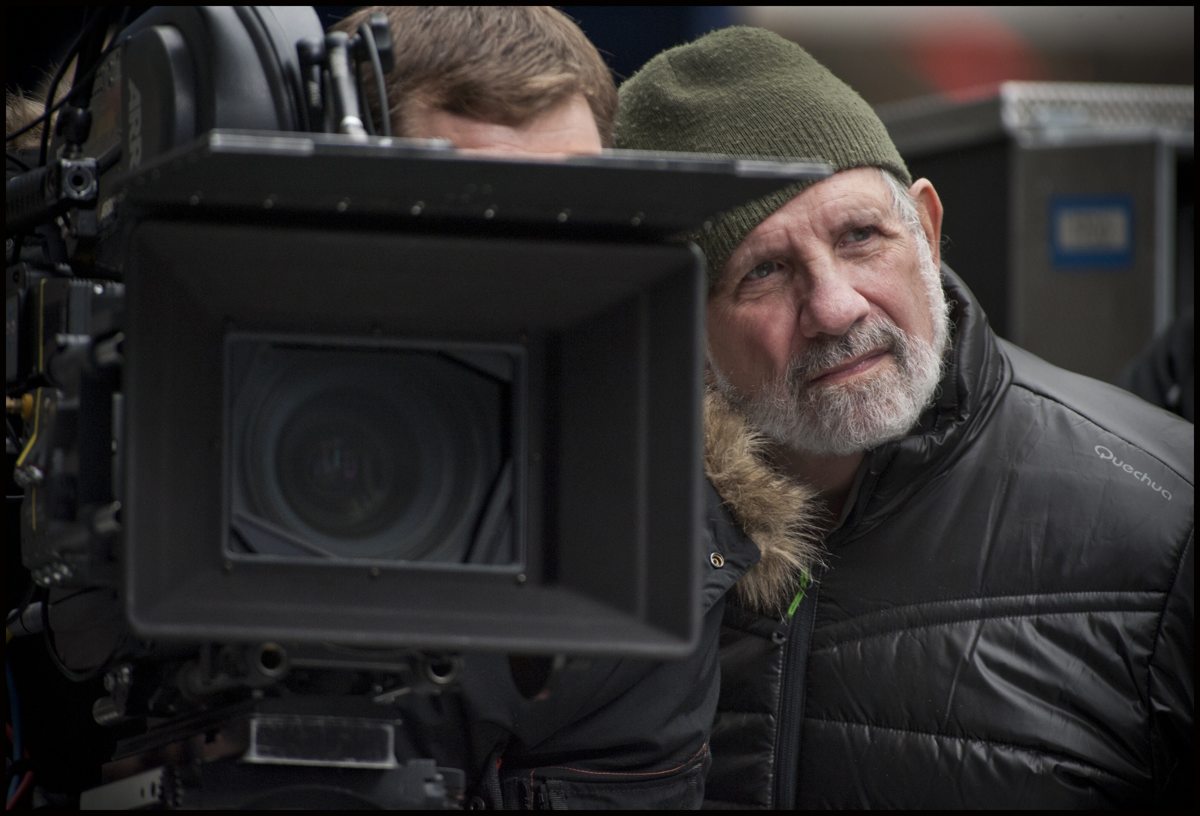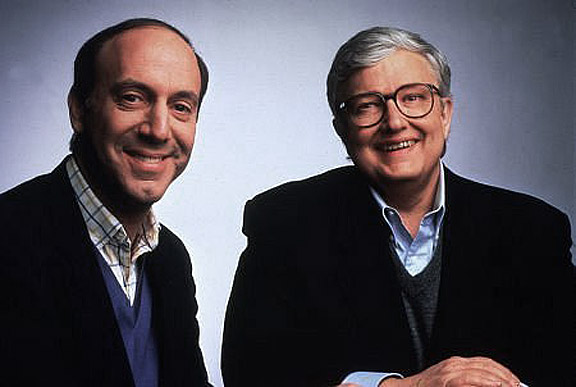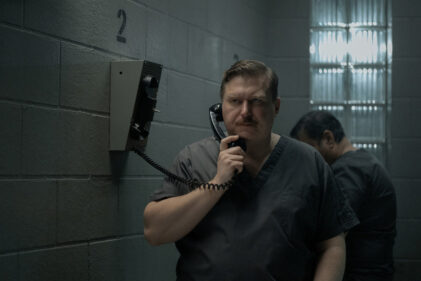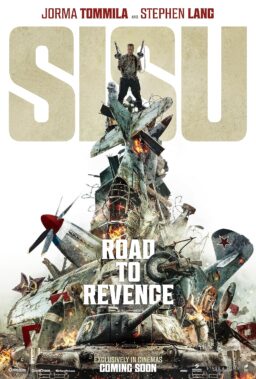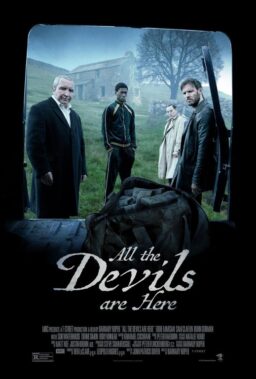If you ever want to instigate an massive argument among cineastes, simply mention the name “Brian De Palma” and watch the sparks fly. In a career spanning nearly a half-century, De Palma has been gleefully provoking audiences with outrageous symphonies of sex, violence and twisted humor that have led observers to either celebrate him as a master of suspense with one of the most distinctive stylistic touches of any filmmaker working today or dismiss him as a derivative hack who stole everything he knows from the works of Alfred Hitchcock, has an attitude towards women that is borderline misogynistic and could not tell a coherent story to save his life.
Needless to say, I happen to fall squarely in the first camp and to both defend that position and celebrate the release of his latest film, the highly impressive “Passion,” I have compiled the following retrospective look at his entire career (minus one or two obscurities). Some are better than others but with few exceptions, they are all the work of a singular director with a singular vision that stand out all the more amidst its committee-created competition and which make even his weakest efforts more interesting than the best works of most other filmmakers working today.
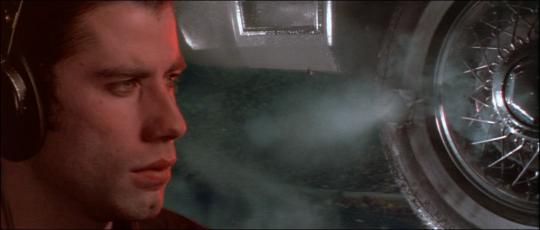
1) “Blow Out“ (1981): In this masterful thriller, John Travolta plays a sound man for a sleazy movie producer who inadvertently records a car plunging off a bridge containing a potential presidential candidate and a hooker (Nancy Allen) whom he manages to rescue. Upon studying his tapes, he becomes convinced that he can hear a shot just before the fatal tire blow out and tries to get to the bottom of the growing conspiracy with tragic results. Far from being the “Blow-Up” knock that many assumed it to be, this film brought together the obsessions that had fueled his best films and revisited them in a startlingly mature and thoughtful manner. Throw in great performances across the board (Travolta has never been better, Allen never more lovable and sympathetic and John Lithgow and Dennis Franz never sleazier as two of the guys involved in the “accident”), a straightforward style that is still electric despite the relative lack of visual pyrotechnics (the scene in which Travolta fuses his soundtrack to a series of photos taken during the accident to make his own Zapruder-like film may be the most spellbinding thing De Palma has ever filmed) and a gut-punch of an ending that can still be felt after 30 years and you have De Palma’s masterpiece and a film permanently enshrined in my personal all-time Ten Best list.
2) “Femme Fatale“ (2002): After pulling off a daring heist during a gala premiere at the Cannes Film Festival and double-crossing her thuggish colleagues, a sexy thief (Rebecca Romijn) manages to escape France for a new life in America. Seven years later and now married to the U.S. ambassador (Peter Coyote), she returns to find herself the target of an ambitious photographer (Antonio Banderas) and her recently released former partners. A total knockout from start to finish,this may be the most purely De Palma film of them all—smart, sexy, diabolically funny, both technically and dramatically audacious and anchored by a strong and fascinating female character (Romijn more than lives up to the title here)—and it is definitely his finest work since the peak of “Blow Out.”
3) “Phantom of the Paradise” (1974): Fusing together elements from “Faust,” “Phantom of the Opera,” “The Picutre of Dorian Gray” and bombastic rock acts like Alice Cooper and Led Zeppelin, De Palma next came up with this horror-musical-comedy in which an aspiring songwriter (William Finley) loses his work, voice and the love of his life (Jessica Harper) to a Phil Spector-like music mogul (Paul Williams) and plots a gory revenge to coincide with the opening of the mogul’s new music palace, the Paradise. The blend of Grand Guignol-style horror, sly satire aimed at the excesses of the music industry (which can also be read as a reaction to the “Get to Know Your Rabbit” experience) and a collection of tunes by Williams that are both witty and catchy resulted in one of De Palma’s most wildly entertaining films, though one that mysteriously failed to connect with audiences at the time.
4) “Dressed to Kill“ (1980): A sexually frustrated housewife (Angie Dickinson). A dedicated psychiatrist (Michael Caine). A hooker with a mind for high finance (Nancy Allen). A fateful trip to the museum. A mysterious blonde wielding a straight razor. Shower scenes and dream sequences aplenty. These were the ingredients that De Palma brought together for this masterful thriller that took its inspiration from Alfred Hitchcock’s “Psycho” and then spun off into surreal, suspenseful and darkly funny areas of its own. When it was released in the summer of 1980, it faced a storm of controversy from groups that felt that its heady combination of sex and violence aimed at its female characters was misogynistic and critics who felt that his homages to Hitchcock were crossing the border into outright plagiarism (a charge that was intensified when the film was released a couple of months after Hitchcock’s death with an ad campaign describing De Palma as a modern master of suspense). Viewed today with those controversies having long since faded from memory, the film can now be viewed as one of his most supremely stylish efforts and one that still plays beautifully even today.
5) “The Untouchables“ (1987): This crowd-pleasing screen version of the old television show chronicling the Prohibition-era war in the streets of Chicago between straight-laced government agent Elliot Ness (Kevin Costner) and famed mob boss Al Capone (Robert De Niro) proved to one of the biggest hits of its year and of De Palma’s entire career and it isn’t hard to understand why. Utilizing a straightforward cinematic style reminiscent of the works of John Ford, an endlessly quotable screenplay by David Mamet and the undeniable star power of Costner, De Niro and Sean Connery (who won an Oscar for his work as Ness’ partner and mentor), De Palma came up with a classic gangster saga that also allowed him to pull together amazing scenes like the raid on bootleggers on the Canadian border and the famous “Battleship Potemkin”-inspired shootout on the steps of Union Station with a baby beatifically bouncing between the bullets. Sure, any Chicagoan can tell you that the film is fairly suspect from a historical perspective but even the most nit-picky of viewers will be too caught up in the action to care.

6) “Carrie“ (1976): De Palma had his long-awaited big commercial breakthrough with his adaptation of the Stephen King novel about an awkward teenage girl (Sissy Spacek) who gets revenge for years of torment at the hands of her cruel classmates (including John Travolta, Nancy Allen and P.J. Soles) and domineering mother (Piper Laurie) one fateful prom night when she unleashes her terrifying telekinetic powers on those who have wronged her. Instead of playing up the main character’s paranormal abilities, De Palma instead concentrated on making her as touchingly human as possible in order to make her final humiliation all the more tragic and her eye-popping vengeance all the more satisfying. The end result was a box-office smash that earned Oscar nominations for Spacek and Laurie (a feat almost unheard of at the time for the horror genre) and still has viewers jumping in their seats during its legendary and much-copied final jolt from beyond the grave.
7) “Passion“ (2013): Corporate intrigue takes a brutal turn when the battle of wills between a devious executive at a multinational corporation (Rachel McAdams) and her ambitious assistant (Noomi Rapace) grows from credit theft to public humiliation to bloody revenge. In remaking the 2010 French thriller “Love Crime,” De Palma creates an extremely stylish work that embroiders upon the original in intriguing ways that transforms it from a mere retread into something that feels truly distinctive and personal. Worth the price of admission just for its beautifully constructed centerpiece sequence—a split-screen sensation in which a ballet performance unfolds alongside other equally choreographed moves—the film as a whole is a sexy stunner that is De Palma’s most satisfying work since “Femme Fatale” and proves once again that when it comes to manipulating and teasing audiences, he is still the reigning champion.
8) “Carlito's Way“ (1993): Ten years after their first collaboration, De Palma and Al Pacino reunited for another violent gangster saga, this one, set in the Seventies, finding Pacino (far more sedate here than as Tony Montana) as an aging Puerto Rican criminal who, after getting released from jail on a technicality exploited by his ambitious lawyer (Sean Penn in one of the best and most overlooked performances of his career), decides to give up his former lifestyle once and for all, only to get dragged back into it against his will. Although based on a couple of novels by former judge Edwin Torres, the film is especially fascinating for the way that the story parallels De Palma’s own career—both, after all, feature heroes who start out in the streets (the indie films), become celebrated purveyors of violence and depravity until they are put away for their crimes (the controversies surrounding “Dressed to Kill,” “Scarface” and “Body Double“), are released from their respective prisons on a fluke (the surprise success of “The Untouchables”) and find their attempts to break free of their brutal pasts (“Casualties of War” and “The Bonfire of the Vanities“) scorned by people who would rather seen him return to the dirty deeds that he made his name with in the first place. If that is too far-fetched of a reading for you, then simply sit back and watch in astonishment as De Palma assembles one of the greatest sequences of his entire career—the thrilling extended conclusion in which Pacino tries to elude his murderous pursuers through the subways and throughout Grand Central Station in a final bid for freedom from his past and present. Years later, the esteemed French film magazine Cahiers du Cinema named this the best film of the Nineties and while that may be a bit of an overstatement, I have a suspicion that if I had to pick between one or the other, I might choose it over “Scarface.”
9) “Raising Cain” (1992): With nods to both “Psycho” and Michael Powell’s “Peeping Tom” (1959), this satirical thriller features John Lithgow as a man whose father literally wrote the book on child-rearing—alas, he did so by psychologically torturing his own son to such a degree that he developed multiple personalities ranging from a swaggering killer to a scared little boy. Now a child psychologist himself, Lithgow seems to be following in the old man’s footsteps and when his neglected wife (Lolita Davidovich) rekindles an affair with an old flame (Steven Bauer), he snaps for good. De Palma clearly made this film with tongue planted firmly in cheek but many observers failed to get the jokes and criticized it for being too silly. Although the story gets bogged down a little in the early going, this is still a hugely entertaining work that contains a tour-de-force performance by Lithgow that finds him playing no fewer than five characters, several stand-out sequences (such as the hilariously twisted flashback involving the first kiss between Bauer and Davidovich) and a brilliant take on what is usually the least interesting scene in films of this type—the bit where someone is brought in out of left field to explain the whole plot, something that Hitchcock himself struggled to pull off in “Psycho.”

10) “Scarface” (1983): After turning down the chance to direct “Flashdance,” De Palma signed on to helm a jumbo-sized remake of the 1932 Howard Hawks crime classic that transferred the rise and fall of a violent and twisted gangster from Prohibition-era Chicago to cocaine-era Miami. With a script by Oliver Stone and Al Pacino in the central role of Cuban tough guy Tony Montana, a quiet and reflective drama was probably never in the cards but no one expected the super-violent and wildly over-the-top spectacle that De Palma offered viewers. At the time, the combination of blood and blow put off as many moviegoers as it attracted and while it was reasonably successful, it was far from the hit that observers had expected. In subsequent years, however, audiences finally began to spark to its tale of lurid excess and it has become one of the signature cult films of its era. At nearly three hours, it can be a little wearying at times but it is never less than compulsively watchable due to some spectacular set-pieces (such as the infamous chainsaw torture sequence and the final attack on Tony’s compound that finds him so coked up that he barely notices the bullets tearing him up), Pacino’s singular performance—it may be one-note but man, what a note.
11) “The Fury“ (1978): After failing to get other projects off the ground, De Palma made the curious decision to follow up “Carrie” with another film involving teenagers with telekinetic powers—this one, based on the John Farris novel, involving an increasingly unhinged young man (Andrew Stevens) whose terrifying psychic powers are being exploited by a clandestine government agent (John Cassavetes) and an equally powerful girl (Amy Irving) who teams up with the boy’s father (Kirk Douglas) to track him down. Make no mistake, this is an awesomely silly movie in many regards—it basically plays like a compilation of all the scenes of paranormal carnage that he devised for “Carrie” and then abandoned in order to concentrate on the more human elements of the story—and Stevens and Irving are both pretty horrible as the young leads. However, Douglas and Cassavetes both tear into their parts with obvious zeal, the rousing score by John Williams is one of his most underrated and De Palma’s trademark set-pieces are among the most beautifully conceived and executed of his entire career. And if you happen to be of the belief that John Cassavetes is one of the most overrated and boring filmmakers of his time, there is an excellent chance that you will deem the film’s gleefully gory sendoff for his character to be the single greatest ending in cinema history. (Even if you don’t, it is still liable to place in the Top 5.)
12) “Snake Eyes“ (1998): When this conspiracy thriller debuted, the one thing that everyone talked about was the staggeringly complicated opening sequence that, in what was designed to look like a single continuous shot lasting about 13 minutes (though repeated viewings begin to uncover some of the hidden edits), artfully established both the story (a complicated conspiracy thriller involving the assassination of a key government official in front of 14,000 potential witnesses/suspects gathered for a boxing match in an Atlantic City casino) and its central character (a genially corrupt local cop played by Nicolas Cage who is as surprised as anyone to discover that he is unwilling to just let things play out despite the personal and professional risks this decision entails). Although the film never tops that opening, it is still better than its reputation suggests thanks to the intriguing flashback-heavy structure employed by De Palma and screenwriter David Koepp and Cage’s cheerfully flamboyant performance. The ending is a bit of a letdown—a third act involving a hurricane hitting the casino was filmed and dropped at the last minute, leaving a bit of a hole in the proceedings—but those sticking through the end credits will be rewarded with a sick-but-funny final visual gag.
13) “Mission: Impossible“ (1996): Although the first installment of what would prove to be a durable big-screen franchise inspired by the old television spy series would prove to be the biggest financial success of De Palma’s career, some observers charged that the storyline was too confusing to follow at times and was too often overshadowed by the elaborate action set-pieces that, along with star Tom Cruise, were the film’s primary draw. In retrospect, and perhaps this only becomes evident on a second viewing, the narrative is remarkably clever and cohesive for this kind of blockbuster filmmaking and the various tricks and twists that threw people the first time around help to keep things interesting between the money shots. As for the action, it all unfolds in spectacular fashion and the extended scene in which disavowed spy Cruise and his cohorts break into C.I.A. headquarters is such a breathless thrill from start to finish that it still grips viewers even after nearly twenty years and any number of spoofs and ripoffs.
14) “Sisters“ (1973): After his grisly Hollywood experience, De Palma returned to the safer confines of independent filmmaking to create his first real stab at the thriller genre that he would become synonymous with before long. In it, a spunky reporter (Jennifer Salt) witnesses a brutal murder across the street in the apartment of a beautiful model (Margot Kidder), cannot get anyone to believe her story and discovers some horrifying secrets when she decides to investigate on her own. Almost every element that would go on to make De Palma’s films so distinctive can be found here—twisty storylines, voyeuristic imagery, interesting female characters, bursts of sudden and shocking violence, demented dream sequences, a gorgeous visual style including the brilliant use of the split-screen device, wicked humor (the opening game show spoof is both hilarious and surprisingly prescient of how television would gradually devolve), a strong musical score (courtesy of the legendary Bernard Herrmann) and the first of many magnificent closing images—and if the end result isn’t quite the classic that it should have been (it gets a little rushed in the second half), it is still a lot of fun to watch today.

15) “Body Double” (1984): In the wake of the debates surrounding screen violence and alleged misogyny that had painted him in the press as some kind of sadistic monster, De Palma decided to return those accusations with a film that he promised would push the boundaries of cinematic sex and violence to previously unknown levels, a move that guaranteed that it would receive enormous publicity as a result. In this fairly blatant pastiche of elements taken from “Rear Window” and “Vertigo,” Craig Wasson plays a struggling actor apartment-sitting for an acquaintance whose duties include watering the plants and spying on the gorgeous neighbor across the way during her nightly striptease in front of an open window. When she is brutally murdered with a hilariously phallic power drill, Wasson tries to uncover what really happened and his investigation leads him to aspiring porn starlet Melanie Griffith. Challenging “The Fury” in terms of pure preposterousness, the story makes less literal sense than usual, even by De Palma standards, but it is undeniably stylish throughout and Griffith is an absolute delight in her star-making role. Also, anyone still speculating as to where Quentin Tarantino derived the title for his 1992 debut “Reservoir Dogs” might want to give the ending to this one a look for a possible explanation.
16) “Redacted“ (2007): Returning once again to his low-budget roots and inspired by true events, De Palma shifted his focus to the Iraq war to chronicle the tensions between the locals and U.S.. occupying forces, via differing forms of media ranging from embedded journalists to pretentious documentarians to security cameras to the soldiers themselves, and how they eventually and tragically read to the rape of a young local woman and the murder of her family. Although the story will remind many of “Casualties of War,” the film is more interesting as a formal exercise that allows De Palma to explore and criticize the ways in which war is now presented to the world and how an increasingly media-saturated culture now finds everyone so obsessed with playing to the cameras that they don’t even think about what it is that they are actually doing. Although it was one of many Iraq-related films to come out around that time to little box-office success, this is the one that seemed to outrage the most people and that should suggest how deep of a nerve it touches and how good it really is.
17) “Wise Guys“ (1986): In one of the oddest moves of his entire career, De Palma took a leap into broad slapstick with this goofy mob comedy starring Danny DeVito and Joe Piscopo as a couple of extremely low-level mobsters—they are the ones assigned to start the cars in the morning in case they are wired to explode—who run afoul of their boss (Dan Hedaya) and bolt to Atlantic City with a brutish enforcer (one-time wrestling icon Captain Lou Albano) in pursuit. This is not one of the great De Palma films by any means and whimsical humor, even when it involves violence and death, is not exactly one of his strong points. Still, this film does have its charms—DeVito and Piscopo make for a reasonably inspired team and Albano steals every scene that he is in—and while it may be one of the few De Palma movies that could have plausibly been made by anyone else with little difference in the end results, I must admit a certain affection for it.
18) “Hi Mom!” (1970): After filming “Dionysus in 69,” a screen recording of an experimental theater piece based on Euripides’ “The Bacchae,” De Palma came up with this semi-sequel to “Greetings” in which Jon (Robert De Niro again) returns from Vietnam with dreams of becoming a pornographic filmmaker but winds up falling in with the radical politics of the era via a guerrilla theater troupe. Although lacking the freshness of “Greetings,” this is a funnier and more audacious work and the centerpiece sequence, a depiction of the troupe’s production of “Be Black, Baby,” is a hilariously nervy spectacle that needs to be seen to be believed.
19) “Greetings” (1968): Shot in two weeks on the streets of New York on a minuscule budget, De Palma’s first major film was this outrageous social satire following three friends trying to negotiate the social, political and sexual revolutions of the late Sixties—Paul (Jonathan Warden) tries to feed his obsession with sex while figuring out a way to beat the draft, Lloyd (Gerrit Graham) is trying to prove that there was a conspiracy behind the assassination of JFK and Jon (Robert De Niro) is a voyeur who convinces women to strip for his movie camera by telling them that it is for an art exhibition. Inspired less by the thrillers of Hitchcock than by the groundbreaking cinematic agitprop of Jean-Luc Godard, this was a film designed to serve as a snapshot of the times and while it much of it may inevitably seem dated today, the energy and humor still comes through

20) “The Black Dahlia” (2006): Inspired by the infamous unsolved murder that captivated America in the Forties, this adaptation of the James Ellroy novel following a pair of police detectives (Aaron Eckhart and Josh Hartnett) whose investigation of the brutal murder of an aspiring starlet (Mia Kirshner) leads them into a web of madness and deceit that includes madness, the smut picture racket, shady housing deals, corruption and a rich bisexual tease (Hilary Swank) and her twisted family. On the one hand, it looks great, Kirshner is heartbreakingly good in her few scenes and the way that her body is discovered—in the background of another crime scene—is impressive. On the other hand, none of the stars are especially convincing in their period roles (Scarlett Johansson, as the girl who comes between Eckhart and Hartnett, comes closest, at least in looks) and the story doesn’t quite convincingly establish Eckhart’s obsession with the case and how it leads to his downfall, though the latter may be the result of nearly an hour of the film’s original 3-hour length being trimmed before its release.
21) “Obsession“ (1976): De Palma and screenwriter Paul Schrader paid elaborate homage to Alfred Hitchcock’s 1958 masterpiece “Vertigo” with this psychodrama starring Cliff Robertson as a businessman whose wife (Genevieve Bujold) and young daughter are kidnapped and killed in an attempted ransoming gone horribly wrong. Twenty years later, he visits the church in Italy where he and his wife first met, is stunned to see her exact double working there as an art restorer and begins a tentative relationship with her that eventually finds history repeating itself again. Although the combination of De Palma and Schrader sounds like a can’t miss proposition, the film suffers from a disappointing conclusion (supposedly there was an entire third act in the screenplay that De Palma dropped, much to Schrader’s chagrin) and the logy Robertson’s lack of any discernible obsessive qualities. Still, it moves quickly enough, John Lithgow is cheerfully sleazy as Robertson’s partner and the final shot is haunting enough to make you wish that the film preceding it were better.
22) “The Bonfire of the Vanities” (1990): As an adaptation of Tom Wolfe controversial best-selling look at sex, high finance, low journalism and race relations in New York City in the 1980’s, this infamous bomb more than lives up to its reputation—the screenplay never figures out a way to translate Wolfe’s distinctive prose into cinematic terms, the attempts to make its characters more sympathetic rang hideously hollow and Tom Hanks, Bruce Willis and Morgan Freeman were hideously miscast in roles that were practically tailor-made for William Hurt, Peter O'Toole and Alan Arkin. However, if you can somehow manage to completely forget about the book, the film does generate some interest as a very expensive and more technically adept version of his early social satires. Although not quite as bad as its reputation might suggest, the best thing about it is that it did inspire “The Devil’s Candy,” Julie Salamon’s fly-on-the-wall chronicle of every behind-the-scenes decision that led to its (un)making—a story that might inspire an intriguing movie of its own one day, assuming that they can work out the casting.
23) “Casualties of War” (1989): Based on a true story that was chronicled in a 1969 article in The New Yorker, the film recounts the horrifying saga of a squad of American soldiers in Vietnam, led by Sean Penn, that kidnap, rape and eventually murder a young native woman and the efforts of the one member who didn’t participate (Michael J. Fox) to bring the others to justice despite overwhelming odds. Although regarded by many as a surprisingly mature work from a filmmaker more often prone to providing lurid thrills, I must confess that it is one that has never quite worked for me that well. De Palma spent years trying to get it made and, like so many other long-standing pet projects from other filmmakers, it feels as if he had no more energy to give to the project when he finally got it off the ground. I also have a problem with the story’s framing device that tries and largely fails to end the story on a slightly redemptive note instead of in the emotionally shattering manner in which it should conclude.
24) “Mission to Mars” (2000): De Palma made his first foray into science-fiction filmmaking with this adventure about a NASA crew (including Gary Sinise, Tim Robbins and Connie Nielsen) that is sent to Mars to investigate after a disaster befalls the members of the first manned mission to the planet and makes some startling discoveries when they eventually arrive. This is by far the most cheerfully optimistic film of De Palma’s entire career to date but while there is virtually no trace of his usual caustic cynicism to be found in it, there is also no real sense of a driving purpose behind the whole enterprise. It does contain one killer extended sequence at around the midpoint, in which the mission is struck by a disaster that starts small, gradually and inexorably grows in size and scope and leads to the unexpected death of one of the key participants, that is almost, though maybe not quite entirely, worth the price of admission.

25) “Murder à la Mod” (1968): De Palma’s first commercially distributed feature (“The Wedding Party,” which he made with then-unknowns Robert De Niro and Jill Clayburgh, was shot in 1964 but not released until 1970) was this odd horror film laced with plenty of laughs, gore and weirdo touches. Andra Ankers stars as Karen, a woman who discovers that her married lover (Jared Martin) is working in the nudie film industry alongside the supremely strange Otto (De Palma regular William Finley). Karen assumes that her lover is doing it in order to make enough money to divorce his wife and decides to help him along by stealing some cash, a move that as well for her as it did for Janet Leigh in “Psycho.” This is a surprisingly ambitious work that balances the expected flaws brought on by a limited budget and weak performances by experimenting with the narrative form in interesting ways, especially in regards to how it presents certain events through multiple perspectives, and in how many of the scenes play like dry runs for moments that he would come back to in his subsequent career.
26) “Home Movies” (1979): After working on “The Fury,” his biggest film to date in terms of scale and budget, De Palma returned to his independent roots by utilizing the students from a filmmaking class he was teaching at Sarah Lawrence to put together a low-budget comedy about a awkward young man (Keith Gordon) who, after being encouraged by a media-oriented self-help guru (Kirk Douglas) to be the star of his own life, begins to assert himself and has an affair with his older brother’s fiancee (Nancy Allen). Although a noble effort (and one that anticipates Steven Soderbergh’s occasional forays into micro-budget filmmaking), the film is kind of a mess as far as I can recall (it is fairly difficult to come across these days and I am relying on memories of a long-ago viewing), though I have a feeling that in a time when people chronicle every minute detail of their lives for all to see via the Internet, the media-related satire may well play better today than it once did.
27) “Get to Know Your Rabbit” (1972): The now-hot De Palma was given his first shot at working in the big leagues when he was hired by Warner Brothers to direct this comedy featuring Tommy Smothers as a disillusioned stockbroker who decides to drop out, as was the custom of the times, in order to become a tap-dancing magician, finds unexpected success and once again becomes disenchanted when he once again finds himself trapped within a stifling corporate atmosphere. To put it simply, the end result is pretty much a complete disaster—a misfired stab at social satire that is crippled by having no discernible point of view, very few moments of real wit (most of those coming from a brief supporting turn from Orson Welles) and one of the less charismatic leading men you will ever see in Smothers. For De Palma, the project was a personal disaster as well as he wound up clashing with both Smothers and Warner Brothers and was eventually fired before he could finish the film. De Palma completists looking upon it simply as a curiosity will find it to be hard going and for everyone else, it is pretty much unwatchable.

